Key takeaways
- Stage presence is essential for connecting with the audience; it transforms a performance into a shared experience.
- Key elements of stage presence include confidence, engagement, energy, and authenticity.
- Building confidence involves practice, audience engagement, and positive affirmations; vulnerability can enhance authenticity.
- Personal experiences, like open mic nights and feedback from peers, play a significant role in refining stage presence.
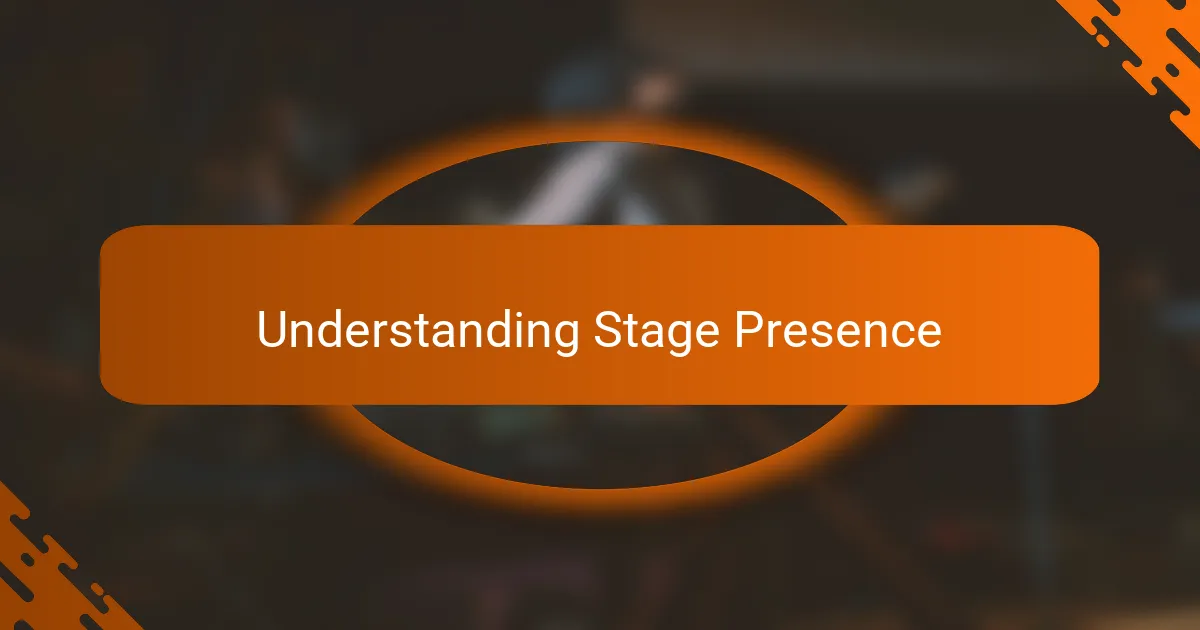
Understanding Stage Presence
Understanding stage presence is crucial for any musician seeking to connect with their audience. I remember my first performance; I was so focused on the notes that I barely acknowledged the crowd. It was only when I started to make eye contact and engage with the audience that the energy in the room transformed.
Stage presence isn’t just about how you look or move; it’s about creating an emotional connection. I’ve learned that when musicians show their true selves—vulnerability and passion—the audience responds positively. This connection not only enhances the performance but also leaves a lasting impression on everyone in attendance.
Here’s a comparison table that highlights key elements of stage presence:
| Element | Description |
|---|---|
| Confidence | Projecting self-assurance through body language and vocal delivery. |
| Engagement | Connecting with the audience through eye contact and interaction. |
| Energy | Maintaining a lively performance that keeps the audience interested and excited. |
| Authenticity | Being true to oneself, sharing personal stories or emotions. |
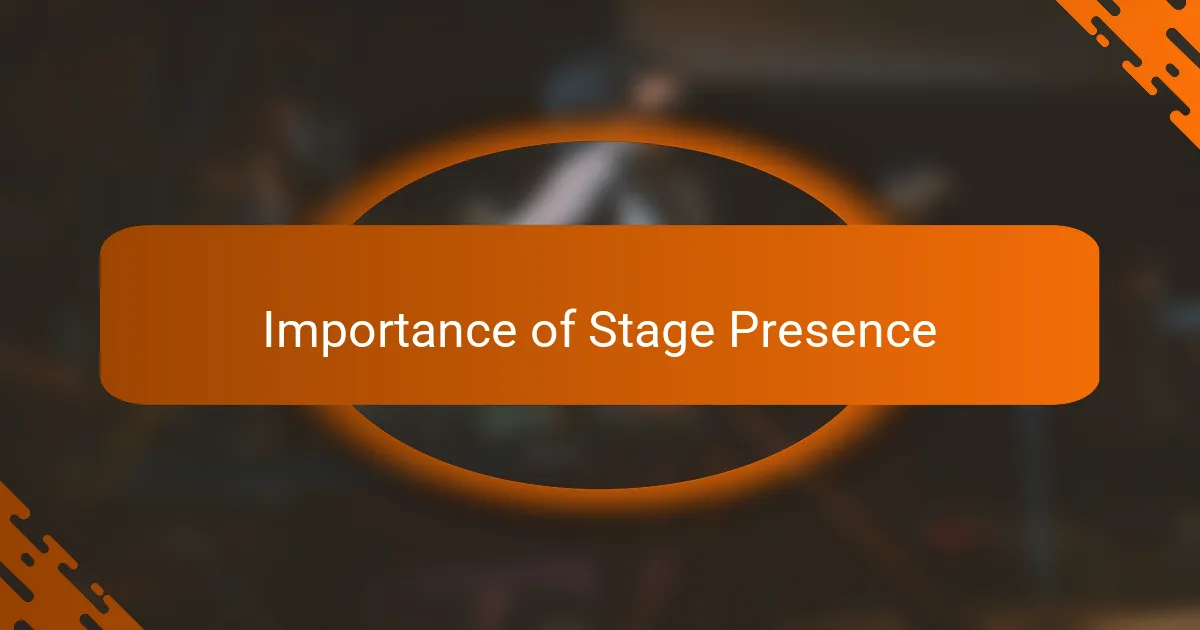
Importance of Stage Presence
Stage presence isn’t just about looking good under the spotlight; it’s an essential skill that can elevate a performance from average to unforgettable. I remember my first gig when I was anxious and stiff. The audience can sense that energy, and it affects their experience. Engaging with the crowd, making eye contact, and conveying genuine emotions creates a connection that keeps the audience coming back for more.
I’ve found that a strong stage presence can not only enhance the music but also create an atmosphere where the audience feels involved. It turns a concert into a shared experience, where I’m not just performing; I’m inviting everyone to be part of something special. Whether it’s through movement, [censured] expressions, or just the way I interact with the audience, each element plays a role in how my message comes across.
A comparison of stage presence versus lack of it can help clarify its importance:
| Stage Presence | No Stage Presence |
|---|---|
| Engages the audience emotionally | Leaves the audience feeling disconnected |
| Creates a memorable experience | Result in forgettable performances |
| Enhances the overall performance quality | Can overshadow musical talent |
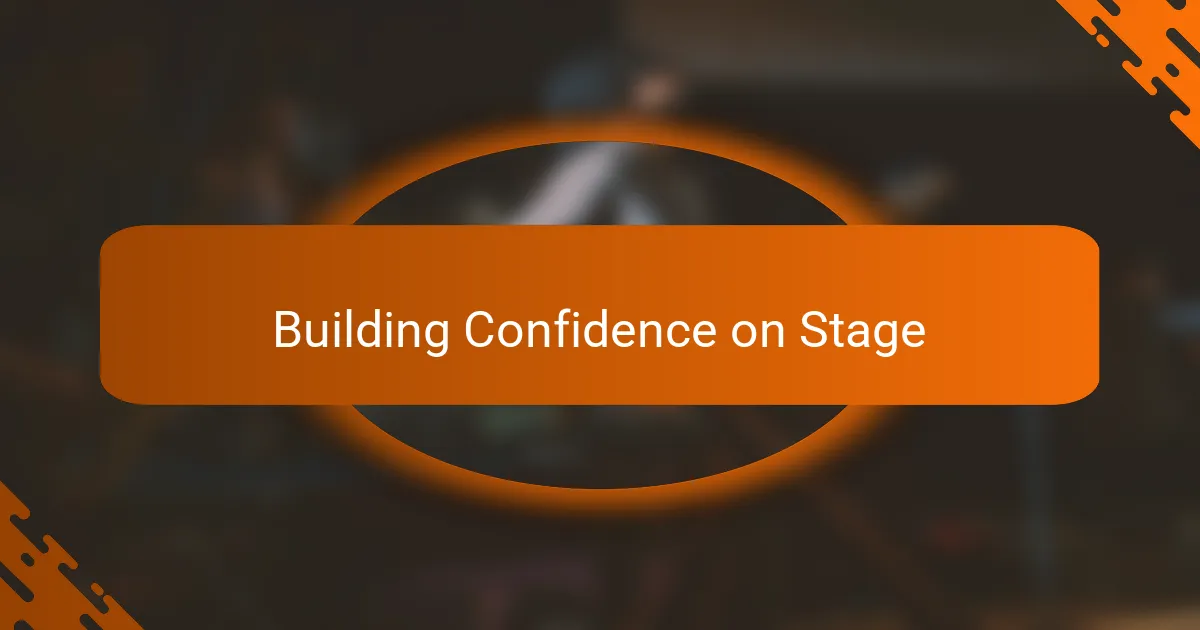
Building Confidence on Stage
Building confidence on stage is a journey that every musician must embark on. I vividly remember my first performance; my hands trembled, and my heart raced. Over time, I learned that confidence doesn’t just come from experience but also from preparation and mindset. I began practicing in front of friends and family, which gradually transformed my anxiety into excitement.
One effective strategy I found was to visualize success before stepping on stage. Imagining the audience’s warm reception helped ease my nerves. Here are some methods that have worked for me in cultivating stage presence:
- Practice Regularly: The more I performed, the easier it became. Rehearsing familiar songs made me feel more at home on stage.
- Engage with the Audience: Eye contact and smiles create a connection that boosts my confidence.
- Breathing Exercises: Before each show, deep breathing calms my nerves and centers my focus.
- Positive Affirmations: Telling myself, “I’ve got this!” shifts my mindset from fear to empowerment.
- Dress for Success: Wearing an outfit that makes me feel good instantly elevates my confidence.
I’ve found that confidence on stage is less about perfection and more about authenticity. The more I embraced who I am, the more comfortable I became in my performances.
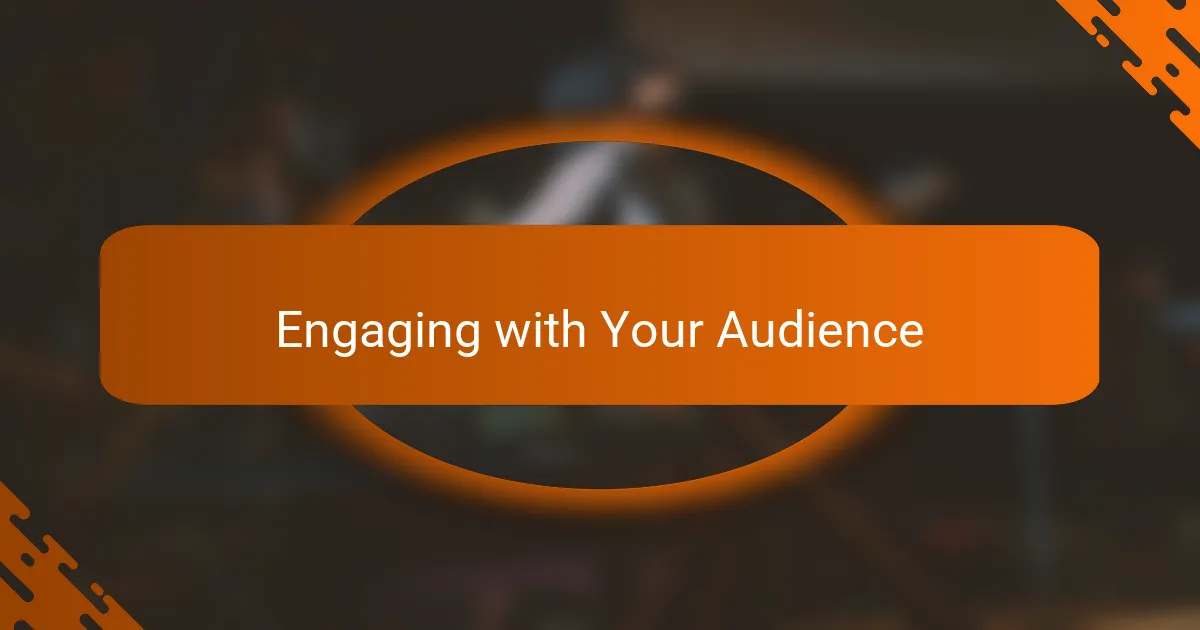
Engaging with Your Audience
Engaging with your audience is perhaps the most crucial element of stage presence. I remember a performance where I made eye contact with a few audience members. Their reactions fueled my energy, and I felt a connection that turned a simple song into a shared experience.
Incorporating gestures and movement can also elevate your engagement. I like to walk towards the crowd during a particularly emotional part of a song. It creates a sense of intimacy and makes the performance memorable for both me and the audience.
Here’s a quick comparison of different engagement techniques:
| Technique | Description |
|---|---|
| Eye Contact | Creates a personal connection with individual audience members. |
| Movement | Increases energy and makes the performance feel dynamic. |
| Gesture | Enhances the emotional delivery of your music. |
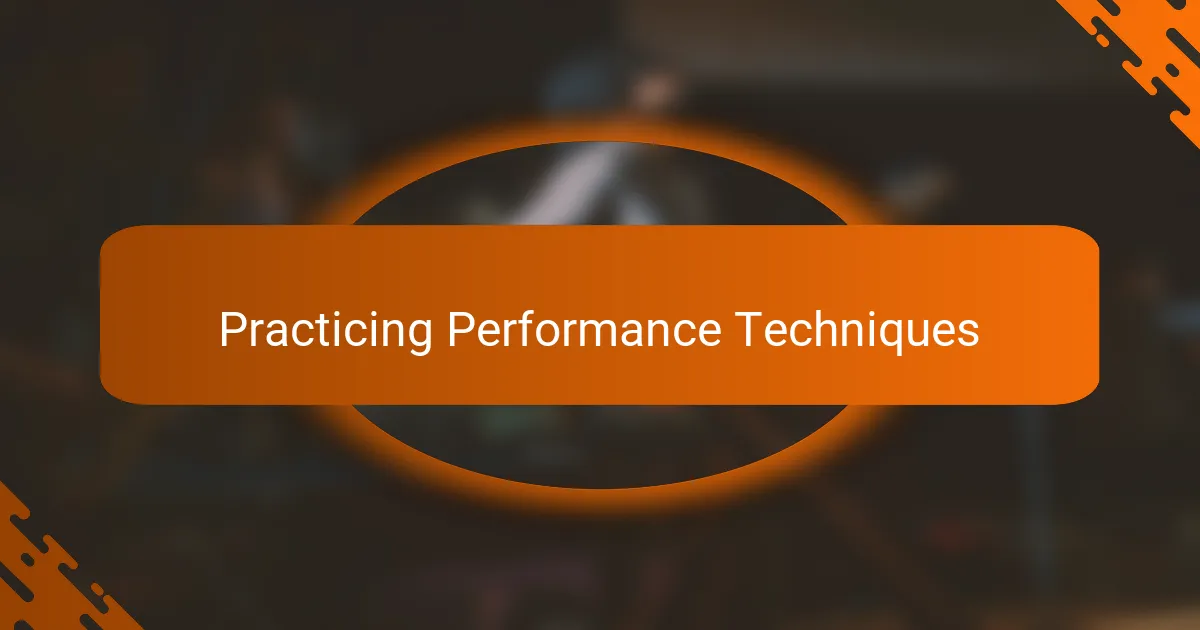
Practicing Performance Techniques
When I first started performing, I struggled with how to connect with my audience. I remember rehearsing in front of a mirror, trying to project emotions while maintaining my stage presence. It was during countless practice sessions that I discovered the importance of performance techniques; they transformed my approach to live shows.
One key technique was experimenting with body language. I found that subtle gestures could convey deep feelings. Here’s what I’ve focused on during my practice sessions:
- Warm-up exercises for voice and body
- Imaginary audience practice to build confidence
- Vocal control exercises for clarity and volume
- Experimenting with eye contact to engage the audience
- Recording rehearsals to analyze my stage presence
- Exploring different emotional expressions to connect with the music

Personal Experiences that Shaped My Presence
One major experience that shaped my stage presence was performing at an open mic night for the first time. Standing under those bright lights felt intimidating, but I forced myself to embrace the nerves. That night taught me that vulnerability can be powerful; sharing my song seemed to create a genuine connection with the audience, something I cherish deeply.
Another pivotal moment came when I participated in a local music festival. I remember looking out at a sea of faces, excited and supportive. That experience reinforced my belief that stage presence isn’t just about flashy moves; it’s about the energy exchanged with the audience. The thrill of their response fueled my performance, inspiring me to connect even more authentically in the future.
Here are some experiences that helped refine my stage presence:
- Open Mic Nights: Gained confidence by performing in front of small audiences.
- Feedback from Peers: Friends and fellow musicians offered constructive critiques that pointed out both strengths and areas for improvement.
- Intimate Gigs: Playing in small venues allowed me to interact closely with audiences.
- Dancing While Playing: Incorporating movement made my performances feel more dynamic and engaging.
- Vocal Coaching: Developing my voice helped me feel more confident and expressive on stage.